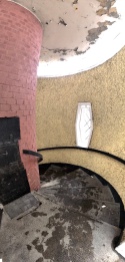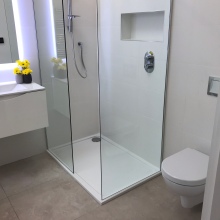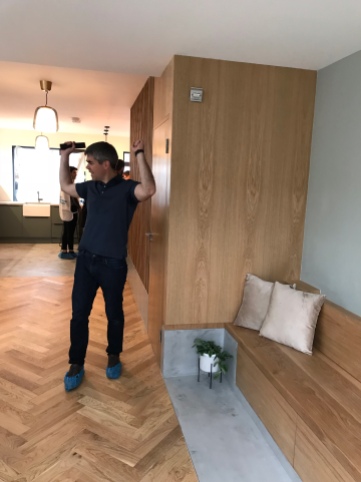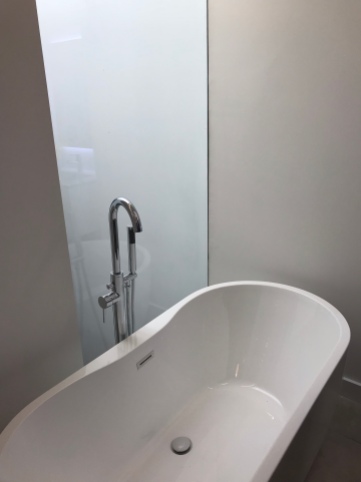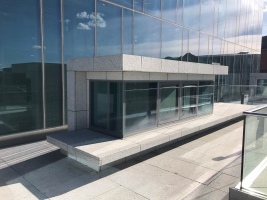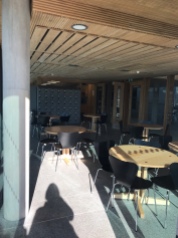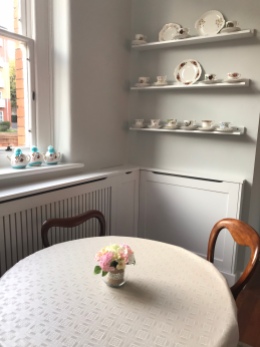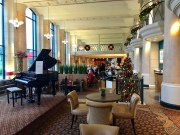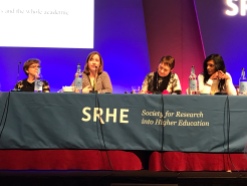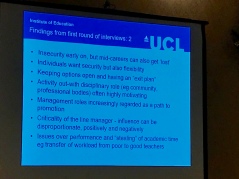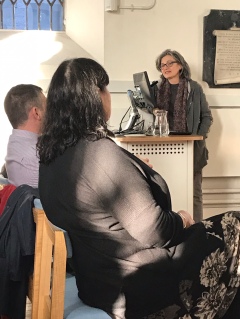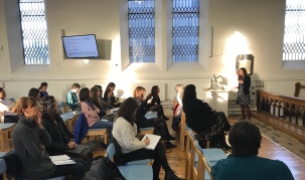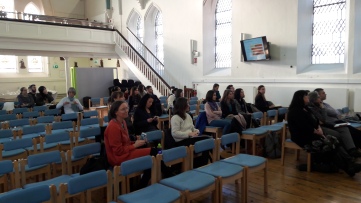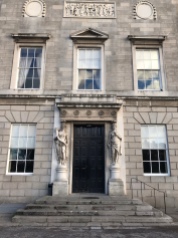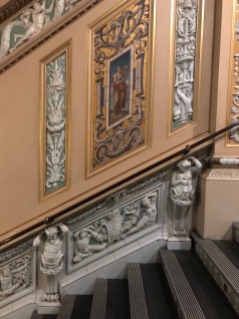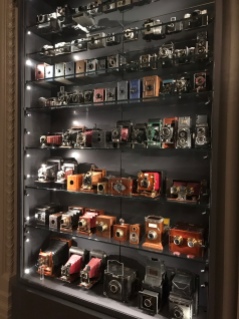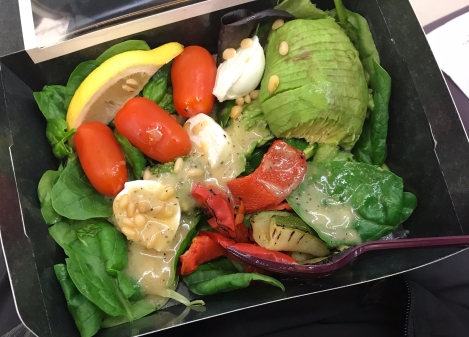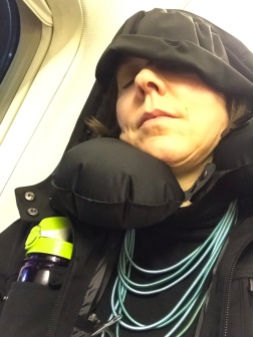For those of you interested in learning more about educational research or finding an academic position in engineering education research, I’m posting some exciting opportunities.

Shannon Chance sharing examples of design portfolios and methods of book-binding with architecture students at Hampton University, a decade ago.
The first is a funded Ph.D. in the topics I love most: Architectural pedagogies, multiple intelligences and educational inclusion. This position will pay for someone to go to Northumbria, UK to get a Ph.D. in this very exciting topic.
Please bring this to the attention of potential candidates. This “Find a PhD” website is valuable for anyone wanting to find funding for doctoral studies. Most positions are open to people of all nationalities.
ASEE’s ERM division job posts
Next, I’m sharing an email I just received from the division of Educational Research Methods of the American Society for Engineering Education, listing jobs in engineering education that are open in the USA right now. Details and links are provided below the list, in the same order as listed. The list was compiled by Virginia Tech’s Dr. Holly M. Matusovich, who is doing excellent work through ASEE.
- Instructions for Submitted Announcements for the ERM Listserv
- POSITION ANNOUNCEMENT: (Updated) Faculty Search: Assistant OR Associate Professor, Department of Engineering Education, Virginia Tech
- POSITION ANNOUNCEMENT: Associate Professor (Tenured Position), Wake Forest University Department of Engineering
- POSITION ANNOUNCEMENT: Assistant Professor (Tenure Track Position), Wake Forest University Department of Engineering
- POSITION ANNOUNCEMENT: Teaching Professor or Professor of the Practice, Wake Forest University Department of Engineering
- POSITION ANNOUNCEMENT: Tenure-Track and Non-Tenure Track Positions in Civil & Environmental Engineering at The Citadel
-

An autonomous robot designed by electrical engineering students at ITB, now the Blanchardstown campus of TU Dublin.
POSITION ANNOUNCEMENT: First-Year Director Job Description, Old Dominion University
- POSITION ANNOUNCEMENT: U-M Post Doctoral Teaching Fellowship in Engineering Education – International Teaching Experience
- POSITION ANNOUNCEMENT: 12 lecturer positions in the Institute for Excellence in Engineering Education at the University of Florida
- POSITION ANNOUNCEMENT: University of Massachusetts Lowell, Department of Biomedical Engineering, Tenure Track Assistant/Associate Professor Faculty Position
- POSITION ANNOUNCEMENT: Two Lecturer Positions, University of Tennessee, Knoxville, Engineering Fundamentals Program (EFP)
- POSITION ANNOUNCEMENT: Tenured Faculty Position in the Department of Engineering Education at Ohio State University
- POSITION ANNOUNCEMENT: : Multiple tenure-track positions at the rank of assistant or associate levels, School of Engineering Education at Purdue University
- POSITION ANNOUNCEMENT: Tenure-track and visiting faculty, Department of Computer Science and Software Engineering at Rose-Hulman Institute of Technology
- POSITION ANNOUNCEMENT: Six tenure-track faculty positions at the assistant professor level, The R.B. Annis School of Engineering at the University of Indianapolis
- CALL FOR PARTICIPATION: Engineering Education CAREER Webinar
=============================================================
- Instructions for Submitted Announcements for the ERM Listserv
To send an announcement to the ERM listserv, please prepare a 2-3 paragraph description including any relevant URLs and contact info as well as a subject line. Do not include any attachments. Be sure that the announcement includes the person to contact with questions. Email all of this information to matushm@vt.edu with [ERM Announcement] in the subject line to facilitate email sorting. Announcements will be sent out on the 1st and 15th of each month. Each set of announcements will be included in the announcements email twice. Announcements will also be recorded on the ERM website: http://erm.asee.org/
=============================================================
- POSITION ANNOUNCEMENT: (Updated) Faculty Search: Assistant OR Associate Professor, Department of Engineering Education, Virginia Tech
The Department of Engineering Education (EngE) at Virginia Tech invites applications for a tenure-track faculty position at the assistant or associate professor rank. Candidates must hold a doctorate (by August 2019) in engineering education, engineering, education, or a related field; at least one degree (BS, MS, PhD) in engineering or a related field is desirable.
Successful candidates will demonstrate the potential to conduct research in engineering education, secure external research funding, teach in both our first-year and graduate programs, and collaborate within and beyond the department. We welcome applicants with expertise across a wide range of engineering education areas and methods. Our faculty hold degrees in diverse fields, including engineering education, higher education, educational psychology, and linguistics as well as a range of STEM disciplines. Experience in industry is also welcome.
Applications must be submitted online to http://jobs.vt.edu (posting number TR0180132). Review of applications will begin November 26, 2018. Applications should include: (1) a curriculum vitae, (2) a two-page research statement describing current research and future plans, (3) a two-page teaching statement, and (4) names and contact information for three references. Details on how to prepare and submit all materials can found under “Posting Details” for this position on the website. Inquiries about the position should be directed to Chair, EngE Search Committee, 345 Goodwin Hall, 635 Prices Fork Rd., Blacksburg, VA 24061,engesearch18@vt.edu
A more detailed description of the position and information about the Department of Engineering Education can be found at http://www.enge.vt.edu/
=============================================================
- POSITION ANNOUNCEMENT: Associate Professor (Tenured Position), Wake Forest University Department of Engineering
Job Requisition No: R0001130 The new Department of Engineering invites applications at the rank of Associate Professor in any engineering area to begin in the fall semester of 2019. Commensurate with the level of experience, the successful candidate will be appointed to a tenured position in the Department of Engineering and will help establish the new undergraduate engineering program. We seek a colleague who will diversify our team through their scholarly pursuits and will provide significant educational contributions in support of our students’ development as engineers. Wake Forest University (WFU), a top-30 nationally ranked university located in Winston-Salem, North Carolina, welcomed its inaugural class of engineering students in August 2017. As a collegiate university, WFU combines the tradition and intimacy of a small liberal arts college with the innovation and vitality of a research university. Interested applicants should apply via the University’s career website at: http://www.wfu.careers/. Review of applications will begin on December 15, 2018, and will continue until the position is filled with new applications reviewed on a regular cycle. Further information is available atcollege.wfu.edu/engineering/.
=============================================================
- POSITION ANNOUNCEMENT: Assistant Professor (Tenure Track Position), Wake Forest University Department of Engineering
Job Requisition No: R0000982 The new Department of Engineering at Wake Forest University invites applications at the rank of Assistant Professor in any engineering area to begin in the fall semester of 2019. The successful candidate will be appointed to a tenure-track position in the Department of Engineering and will help establish the new undergraduate engineering program. We seek a colleague who will diversify our team through their scholarly pursuits and will provide significant educational contributions in support of our students’ development as engineers. Wake Forest University (WFU), a top-30 nationally ranked university located in Winston-Salem, North Carolina, welcomed its inaugural class of engineering students in August 2017. As a collegiate university, WFU combines the tradition and intimacy of a small liberal arts college with the innovation and vitality of a research university. Interested applicants should apply via the University’s career website at: http://www.wfu.careers/. Review of applications will begin on December 15, 2018, and will continue until the position is filled with new applications reviewed on a regular cycle. Further information is available atcollege.wfu.edu/engineering/.
=============================================================
- POSITION ANNOUNCEMENT: Teaching Professor or Professor of the Practice, Wake Forest University Department of Engineering
Job Requisition No: R0001129 The new Department of Engineering at Wake Forest University invites applications for a Teaching Professor or Professor of the Practice faculty position (at the rank of Assistant or Associate Professor) in any engineering area to begin in the fall semester of 2019. Faculty members with the title of Teaching Professor hold a Ph.D. or terminal degree in the discipline, while faculty members with the title of Professor of the Practice have at least a Master’s Degree in the discipline along with relevant experience different from that achieved through traditional graduate and professional study. The contributions of teaching professionals are significant and cover a broad range of areas, which include teaching, advising and service to their programs, departments, the College, and the University. The successful candidate will diversify our team through their engineering expertise and will provide significant educational contributions in support of our students’ development as engineers. Wake Forest University (WFU), a top-30 nationally ranked university located in Winston-Salem, North Carolina, welcomed its inaugural class of engineering students in August 2017. As a collegiate university, WFU combines the tradition and intimacy of a small liberal arts college with the innovation and vitality of a research university. Interested applicants should apply via the University’s career website at: http://www.wfu.careers/. Review of applications will begin on December 15, 2018, and will continue until the position is filled with new applications reviewed on a regular cycle. Further information is available atcollege.wfu.edu/engineering/.
=============================================================
- POSITION ANNOUNCEMENT: Tenure-Track and Non-Tenure Track Positions in Civil & Environmental Engineering at The Citadel
The Citadel, The Military College of South Carolina invites applications for a tenure-track position at the Assistant Professor level or a non-tenure track lecturer position. The Citadel, The Military College of South Carolina, is a unique public institution with the mission of educating principled leaders through its Corps of Cadets and Graduate College. We are seeking applicants with in Environmental Engineering, Structural Engineering, or Construction Engineering. Minimum qualifications for the tenure track faculty position includes an earned PhD in Civil Engineering, Construction Engineering, or related fields. The successful candidate will have demonstrated a potential and interest in undergraduate education as well as graduate education; undergraduate research, and a strong potential for and commitment to student advising, supporting our nationally recognized student activities, and continuous professional development in both civil or construction engineering, and engineering education. Minimum qualifications for the non-tenure track instructor position include an earned MS in civil engineering or related field, plus five years of experience, or an earned PhD in Civil Engineering, Construction Engineering, or related fields. The successful candidate will have demonstrated a potential and interest in undergraduate education and have design/field experience. Professional registration/ certification or potential for and strong commitment towards obtaining it should be demonstrated for both positions. The applicant must be an effective communicator and be able to serve as a role model for students in the Corps of Cadets and to other students in our day and evening programs. For more information and to apply: http://careers.pageuppeople.com/743/cw/en-us/job/495551/assistant-professor-engineering. Please contact Dr. Mary Katherine Watson (mwatson9@citadel.edu) with questions.
=============================================================
- POSITION ANNOUNCEMENT: First-Year Director Job Description, Old Dominion University
The Batten College of Engineering and Technology at Old Dominion University (ODU) invites applications from accomplished individuals with an earned PhD or equivalent degree in engineering to serve as the Inaugural Director of our First Year Engineering Program starting Fall 2019. The successful candidate is expected to provide leadership in shaping and coordinating our program and courses (structure, curriculum, pedagogy, and assessment); promoting consistency in course contents, standards and instructional modes across different classes; supervising all first-year faculty; coordinating with faculty teaching in the program and related departments (e.g., Mathematics, Physics, Chemistry); and teaching sections of the relevant classes as appropriate. Salary and rank will be based on experience and qualifications.
We seek an individual with strong accomplishments in disciplinary and/or engineering education research, who has an established pedagogical track record in working with undergraduate engineering students. Also of interest is a person who can work effectively with local and regional companies in providing solutions to Engineering problems. An interest in engineering education best practices, research, and assessment are desirable attributes. Candidates must be committed to contributing to high-quality education of a diverse student body at the undergraduate level.
Review of applications will begin January 15, 2019 and will continue until the position is filled. Complete applications will include a cover letter, a current CV, teaching statement, pedagogical innovations, assessment of teaching (if not included in CV), diversity statement, and four references that will be contacted at a later time. The College and University are strongly committed to a diverse academic environment and places high priority on attracting female and underrepresented minority candidates. We strongly encourage candidates from these groups to apply for the position. Application materials should be submitted to:https://jobs.odu.edu/postings/8857
=============================================================
- POSITION ANNOUNCEMENT: U-M Post Doctoral Teaching Fellowship in Engineering Education – International Teaching Experience
We are seeking one post doctoral teaching fellow for a collaboration between the University of Michigan (U-M) Department of Biomedical Engineering and Shantou University (Shantou, Guangdong Province, China). This “train the trainer” engineering education collaboration will lead to the development of the next generation, experiential biomedical engineering curriculum to meet 21st century challenges. Fellows are mentored by U-M instructors on the University of Michigan-Ann Arbor campus and then travel to Shantou University, where they participate in the development and launch of similar courses for the new Shantou University Biomedical Engineering Program. The goal of this collaboration is to introduce innovative, evidence-based pedagogical practices into the Shantou classroom.
Applicants should submit letter of interest, vita, teaching statement, teaching evaluations, and list of three references to aileenhs@umich.edu. Applicants are encouraged, but not required, to submit some type of media that demonstrates their teaching (e.g. link to video of the applicant teaching or an example of an instructional intervention designed by the applicant). Review of applications will begin on February 1, 2019 and continue until the position is filled. The start date is negotiable between June and September 2019.
=============================================================
- POSITION ANNOUNCEMENT: 12 lecturer positions in the Institute for Excellence in Engineering Education at the University of Florida
The Institute for Excellence in Engineering Education (IE³) at the Herbert Wertheim College of Engineering, University of Florida invites applications for multiple, up to 12 full-time, nine-month, or twelve-month non-tenure track positions at the level of Lecturer, Sr. Lecturer or Master Lecturer. The anticipated hiring rank is Lecturer with most positions at twelve-month appointments. Senior levels may be considered based upon experience or the need of the unit. The ideal candidate would have experience in teaching undergraduate and graduate courses in their respective engineering field. The University of Florida is embarking on an initiative to lead the nation in Digital Literacy by 1) Foster Digital Literacy across campus in the use of these tools, 2) Develop and apply the Platform for Life Tools to our education and research endeavors, 3) Promote Digital Responsibility – Manage the human impact of the coming transformation of society. Several lecturer positions will be allocated to this initiative.
Duties and responsibilities include: teaching, revising, and developing undergraduate and graduate engineering courses, and may include both online as well as face-to-face instruction in one or more of the following areas: Computer Science Courses, General Engineering Courses such as Freshmen Design, Non-majors Circuits, and Statics. In addition, there may be other service and teaching activities at local, university, state, and national level, as directed by the Institute Director. IE³ is specifically looking for faculty with a passion for teaching and a desire to develop a career in pedagogy of engineering education. Teaching assignments will be made according to background and experience and will be six to eight course sections per year (twelve-month appointment) based on mutual agreements. To apply and for more information: https://apply.interfolio.com/58175 Questions may be directed to Hans van Oostrom, Ph.D., Institute Director, oostrom@ufl.edu (352) 392-1345
=============================================================
- POSITION ANNOUNCEMENT: University of Massachusetts Lowell, Department of Biomedical Engineering, Tenure Track Assistant/Associate Professor Faculty Position
The Department of Biomedical Engineering at the University of Massachusetts Lowell seeks a full-time faculty member at the rank of Assistant or Associate Professor with expertise in Biomedical Engineering. We have an emphasis on medical device development, but candidates with expertise in medical imaging, bioinstrumentation and biomechanics, as well as other biomedical engineering fields are encouraged to apply. The successful candidate will be expected to coordinate and teach courses geared towards Biomedical Engineering majors as well as perform research. The position includes service contributions to the Department and the University. Apply at: https://secure.dc4.pageuppeople.com/apply/822/gateway/?c=apply&lJobID=494699&lJobSourceTypeID=809&sLanguage=en-us Questions may be directed to Bryan Buchholz., Interim Chair of Biomedical Engineering, bryan_buchholz@uml.edu
=============================================================
- POSITION ANNOUNCEMENT: Two Lecturer Positions, University of Tennessee, Knoxville, Engineering Fundamentals Program (EFP)
The Engineering Fundamentals Program (EFP) at the University of Tennessee, Knoxville, seeks two dynamic Lecturers to contribute to its innovative, first-year engineering program. EFP is the home of the engage program, an integrated and team-taught freshman curriculum, and is responsible for teaching nine credit hours of common freshman coursework for each of the College’s first year students (1000 per year). Subject matters taught include physics, perspective of the engineering profession, teaming, design process with projects, engineering communication and basic computer instruction. EFP also teaches a sophomore computer programming course and other classes, such as First-Year Studies classes, focused on skills for success during the transition from high school to college, and a leadership class for peer mentors who support the Engage Living and Learning Community, a 200+ student residential community for first year students in the Tickle College of Engineering. Details of the Engineering Fundamentals Program are available at http://ef.utk.edu.
These positions are full-time, non-tenure-track, 9-month appointments. Candidates are expected to have an earned doctorate in engineering with an undergraduate degree in any engineering discipline; strongly preferred are candidates with a doctorate in engineering education. Candidates must possess excellent communication skills, and a solid commitment to innovative teaching methods, both traditional and technology enabled. Demonstrated interest in engineering education programs is expected. College-level teaching experience and educational research experience evidenced by refereed conference and journal publications and participation on funded grants are strongly preferred. Professional registration is desirable.
Applications should include: (1) a letter of interest addressing qualifications and teaching interests, (2) a comprehensive curriculum vitae, and (3) the names and contact information (address, phone number, and e-mail address) for at least three professional references. Please send a single electronic file (pdf) as an e-mail attachment to mcopley@utk.edu. Questions about the position should be directed to Dr. Richard Bennett, Chair of the Search Committee, (voice: 865.974.9810; email: rmbennett@utk.edu). Anticipated starting date is August 2019.
For more information, please see the full job posting at: https://webapps.utk.edu/humanresources/utjoblist/PrintJob.aspx?ID=22794
=============================================================
- POSITION ANNOUNCEMENT: Tenured Faculty Position in the Department of Engineering Education at Ohio State University
The Ohio State University invites applications for a tenured faculty position at the rank of Associate Professor or Professor to start August 2019. We are seeking proven, innovative scholars in engineering and/or computing education who will help build the Department of Engineering Education (EED, https://eed.osu.edu/) that was formed in November 2015. Highly competitive candidates have: pioneered significant scholarly contributions to engineering and/or computing research, shown that they can collaborate with both tenure-track and non-tenure-track faculty members from different disciplines, and experience in applying evidence-based pedagogical teaching techniques with attention to inclusion of multiple perspectives and demographics. Successful candidates will be expected to continue to secure external funding to support graduate students and research, cultivate department research initiatives, and collaborate with scholars within the department, within the college, within the university, and across the engineering and/or computing research communities. In addition, they will be expected to contribute to continued improvement of our first-year engineering fundamentals courses, our engineering technical communication courses, or our multidisciplinary campus courses that includes capstone design courses. Finally, they will be expected to build our graduate program and research enterprise.
Interested applicants should submit an application in Academic Jobs Online:https://academicjobsonline.org/ajo/jobs/12602. Please include a cover letter, curriculum vita, statements of teaching and research interests, and names and contact information of five references commensurate with the rank sought. The Ohio State University College of Engineering is strongly committed to promoting diversity and inclusion in all areas of scholarship, instruction and outreach. In the cover letter, describe experiences, current interests or activities, and/or future goals that promote a climate that values diversity and inclusion in one or more of these areas. The Ohio State University is committed to establishing a culturally and intellectually diverse environment, encouraging all members of our learning community to reach their full potential. We are responsive to dual-career families and strongly promote work-life balance to support our community members through a suite of institutionalized policies. We are an NSF Advance Institution, a member of the Ohio/Western Pennsylvania/West Virginia Higher Education Recruitment Consortium (HERC), and have an excellent partner in The Ohio State University Wexner Medical Center. The Ohio State University is an equal opportunity employer. All qualified applicants will receive consideration for employment without regard to race, color, religion, sex, sexual orientation, gender identity, national origin, disability status, or protected veteran status. Application deadline: December 31, 2018.
=============================================================
- POSITION ANNOUNCEMENT: Multiple tenure-track positions at the rank of assistant or associate levels, School of Engineering Education at Purdue University
The School of Engineering Education at Purdue University invites applications for multiple tenure-track positions at the rank of assistant or associate levels. Purdue University seeks to attract exceptional candidates with interests and expertise in engineering education research ranging from pre-kindergarten through college and into engineering practice. Commensurate with rank, new faculty will be expected to develop (or continue to develop) a nationally or internationally recognized, externally-funded research program in engineering education, advise graduate students, teach graduate and undergraduate level courses – including in first-year engineering, Multidisciplinary Engineering, or Interdisciplinary Engineering Studies programs – and perform service at the School, University, and professional society levels.
Please find the full position description at https://engineering.purdue.edu/Engr/InfoFor/Employment/JobDescriptions/171/ENE%20Ad.pdf. Review of applications began on November 1, 2018 and will continue until all positions are filled. Applications are still being accepted for full consideration. For information or questions regarding applications, contact the search committee chair, Tamara Moore at tmoore@purdue.edu.
=============================================================
- POSITION ANNOUNCEMENT: Tenure-track and visiting faculty, Department of Computer Science and Software Engineering at Rose-Hulman Institute of Technology
The Department of Computer Science and Software Engineering at Rose-Hulman Institute of Technology invites applications for tenure track and Visiting faculty positions with an anticipated start date of August 2019. The department, which continues to experience strong enrollment growth (currently 425 students), offers B.S. degrees in computer science and software engineering.
Requirements include a doctorate or near completion in computer science, software engineering or closely related field (including engineering education with an emphasis on these fields) and evidence of or demonstrated potential for excellence in undergraduate teaching. We are looking for candidates from all areas of computer science and software engineering who embrace the mission and vision of Rose-Hulman to join our collegial team of 23 faculty. The department and the institute place a high value on engaging students from traditionally underrepresented groups, and candidates from these groups are especially encouraged to apply. Candidates who can broaden and enhance the educational experience of our students are also encouraged to apply. Rose-Hulman also offers a multidisciplinary, project-driven engineering design major, a multidisciplinary robotics minor, an ongoing research project on human-robot collaboration, and the National Academy of Engineering’s Grand Challenges program among its vibrant interdisciplinary initiatives.
If you have questions and or concerns, please email Sriram Mohan at mohan@rose-hulman.edu Applicants should submit a cover letter, a curriculum vita or resume, a statement on their teaching philosophy and practices, a statement of their professional development goals, and a statement regarding their experience or other evidence of commitment to diversity and inclusion to https://jobs.rose-hulman.edu.
=============================================================
- POSITION ANNOUNCEMENT: Six tenure-track faculty positions at the assistant professor level, The R.B. Annis School of Engineering at the University of Indianapolis
The R.B. Annis School of Engineering at the University of Indianapolis (UIndy) is seeking teacher-scholars for six tenure-track faculty positions at the assistant professor level (9-month contract) with an expected start date of August 2019.Our mission is to use interdisciplinary education to develop modern engineering leaders who create outstanding solutions. The School’s mission is accomplished through the DesignSpine, which provides students with an interdisciplinary design experience throughout their entire academic tenure. These experiences involve projects sourced from external stakeholders, which expose students to design for Six-Sigma, project management, entrepreneurial mindset, and communication. The School has programs in computer science, industrial and systems engineering, mechanical engineering, and software engineering. We are launching programs in computer engineering, electrical engineering, and general engineering starting in the Fall of 2019. To accommodate this growth, the School has a plan to expand into new facilities on campus.
The faculty in the School are comprised of individuals from wide-ranging backgrounds and experiences where collaboration is highly encouraged and supported – including a School structure without department boundaries. The faculty’s educational backgrounds span multiple engineering, computer science, and physical science disciplines, and include those with significant industrial, consulting, entrepreneurial, and project management experience. Our diverse team is dedicated to effective and innovative teaching methodologies, which include a rigorous first-year program, project-based learning, service learning, and current topics courses. Team building and design activities begin from the first day of classes and are reinforced throughout the curriculum. Our small class sizes and experienced professors allow students to design and direct coursework based on their interests, industry trends, and internship experiences.
Review of applications begins December 1st and will continue until all positions are filled. For more information, please see our posting at https://uindy.hyrell.com/VirtualStepPositionDetails.aspx?TemplateId=257773
Questions may be directed to Dr. Jose Sanchez at sanchezjr@uindy.edu
=============================================================
- CALL FOR PARTICIPATION: Engineering Education CAREER Webinar
Julie Martin, the program director for Engineering Education in the EEC Division of NSF, will be hosting a webinar for prospective CAREER PIs on Monday, December 17 from 1-2pm Eastern. Participants are invited to send questions to Julie ahead of time to be answered during the webinar. Please log in a few minutes early to join the meeting. Meeting number (access code): 903 505 576. Meeting password: Career@2018. Join by phone by dialing 1-510-210-8882. The webinar will be recorded. Live captioning will be provided: click here for live captioning and enter event number 3795027.
============================================================
Holly M. Matusovich, PhD
Associate Professor
Assistant Department Head for Undergraduate Programs
Engineering Education
Virginia Tech
355 Goodwin Hall
matushm at vt dot edu
 I have several blogs in my files that I’ve not yet shared. The info below is no longer “news” but it should be interesting and helpful to some, so I’m posting it for you today. Happy holidays!
I have several blogs in my files that I’ve not yet shared. The info below is no longer “news” but it should be interesting and helpful to some, so I’m posting it for you today. Happy holidays! Belvedere House
Belvedere House Croke Park Villas
Croke Park Villas
 Ash Street
Ash Street
 Weaver Park
Weaver Park
 14 Henrietta Street
14 Henrietta Street
 New Garda (Police) Headquarters
New Garda (Police) Headquarters
 The Old Richmond Surgical Hospital
The Old Richmond Surgical Hospital

























